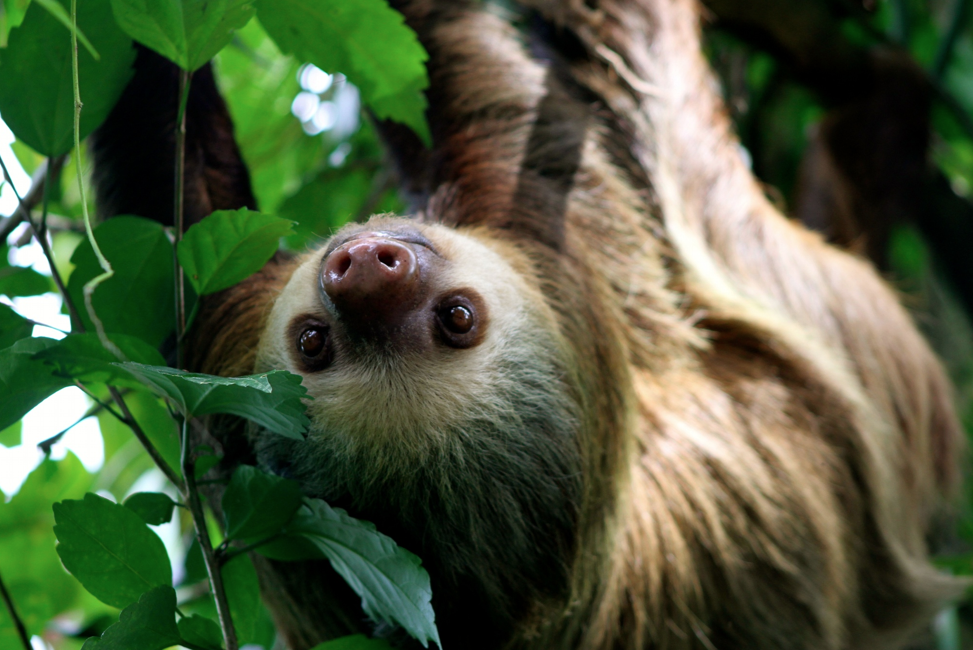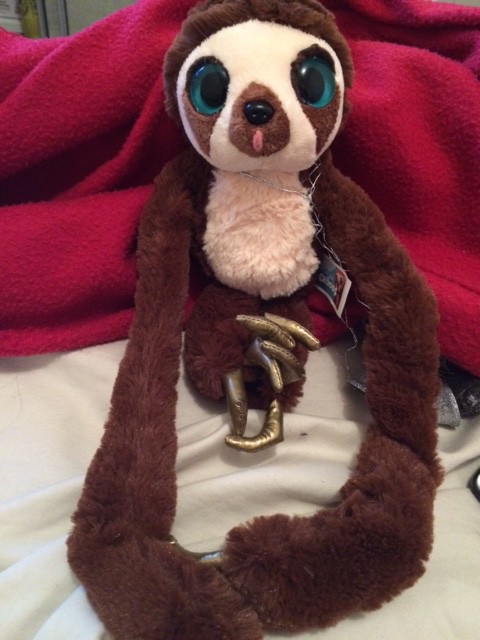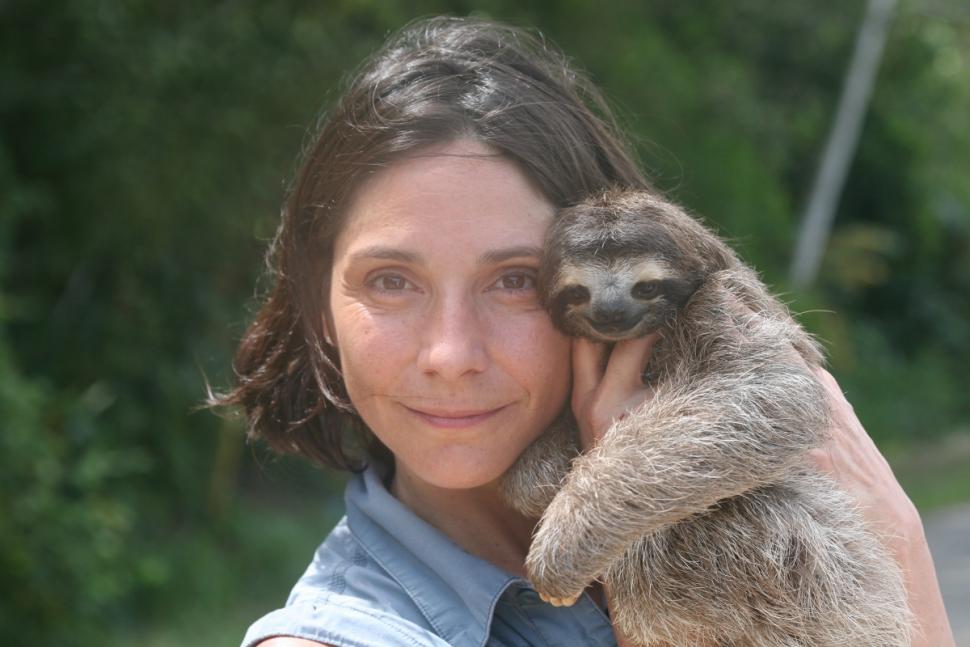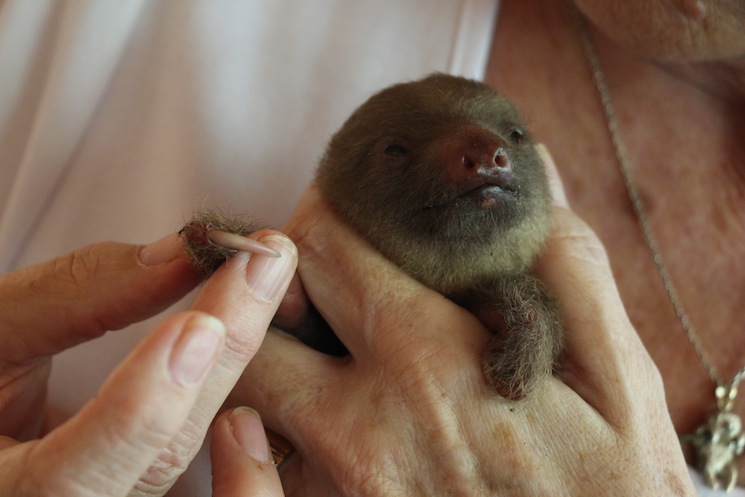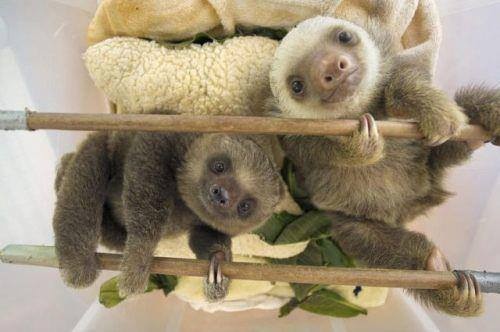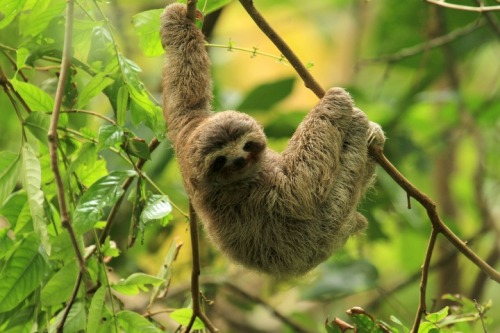Is there anything that sloths CAN’T do?
Category Archives: Science
How do sloths see the world?
Ever wondered what those gorgeous dark eyes are seeing when a sloth looks out onto the world? Humans are generally trichromats; our retinas possess three types of photoreceptors for recognising colour (“cone” cells), each of which has a different absorption spectra.
Xenarthrans (sloths, armadillos and anteaters) however, are rod monochromats. This condition in humans results in colourblindness, low vision in dim light, and almost complete blindness in bright light.
A new study, published in The Royal Society Proceedings journal, used many different genetic methods to conclusively show that the Hoffmann’s two-toed sloth is a monochromat. Furthermore, they concluded that these sloths have a long history of monochromacy. Based on fossil records, this may be a result of a historically subterranean lifestyle (ground-dwelling), that preceded the arboreal lifestyle (tree-dwelling) they live today, and hence restricted their evolution due to the dim light conditions.
“We searched the genome of…Choloepus hoffmanni (Hoffmann’s two-toed sloth)…for retinal photoreceptor genes and examined them for inactivating mutations. We hypothesize that rod monochromacy…evolved as an adaptation to a subterranean habitat in the early history of Xenarthra. The presence of rod monochromacy has major implications for understanding xenarthran behavioural ecology and evolution.”
So when you look into a sloth’s eyes, what do they see when they look back at you? If it’s day time, probably a light grey, blurry figure. But let’s just pretend otherwise, shall we?
Xena the Sloth
Xena is a little bit unpredictable. She can be quiet one minute and full of beans the next! But you can’t help but love her.  If you like the look of this little sloth, grab it from Amazon.
If you like the look of this little sloth, grab it from Amazon.
The name Xena comes from the word “Xenarthra“, the superorder of placental mammals which includes tree sloths as well as their cousins armadillos and anteaters. It means “strange joints”, as the vertebral joints of these animals have extra articulations and are unlike any other mammal (xenarthry).
I know, I know. This sloth is actually called Belt from The Croods. But, well, I like to personalise my sloths with their own unique natures.
New baby sloth at Topeka Zoo, Kansas
On November 20 there was a new arrival at Topeka Zoo in Kansas, USA. A little baby for sloths Jackie and Mocha! See more pics here.
Did you know:
A Hoffmann Sloth like this one (Choloepus hoffmanni) has a gestational period of 11.5 months. This is relatively long compared to other sloth species: the pale-throated three-toed sloth (Bradypus tridactylus) has a gestational period of 4.5 months and the pygmy three-toed sloth (Bradypus pygmaeus) is 6 months. On average, all sloth species give birth to one baby every year.
A Sloth Named Velcro
Recently, American channel PBS screened a documentary titled “A Sloth Named Velcro” on Nature. Here’s a link to the video if you’re lucky to be in the US… it isn’t available in Oz unfortunately. I managed to get a hold of a copy though and it is fantastic! Very educational, informative, adorable, interesting and of course full of wonderful sloths of all kinds. Even taught me a thing or two.
On a similar note, someone at work found out about my sloth obsession not that long ago. They didn’t even know what a sloth was. Bless. Then today it got brought up by someone else and said coworker says “So, okay, tell me about sloths”. Well. Where do I begin…
Please help save baby sloths from deformities
The incidence of congenital disorders in the wild sloth population appears to be increasing, and the Sloth Sanctuary of Costa Rica want to do something about it. The deformities have all been similar; missing fingers/toes, malformed ears and misshapen limbs.
The deformities are likely to be a result of inbreeding due to habitat destruction and their subsequent confinement to isolated islands. The Sanctuary is working frantically to save these little babies, but also needs to find out whether a lack in genetic diversity is the cause, so steps can be taken to reduce the effects. You can help out, as I have, by donating here to cover some of the costs of this scientific research.
Lucy Cooke Interview on Radio 4 in Four
Go have a listen to this interview of Lucy Cooke on BBC Radio 4. Did you know that female sloths scream in at the pitch of D-sharp? You can follow Lucy on Twitter or at Slothville.com. 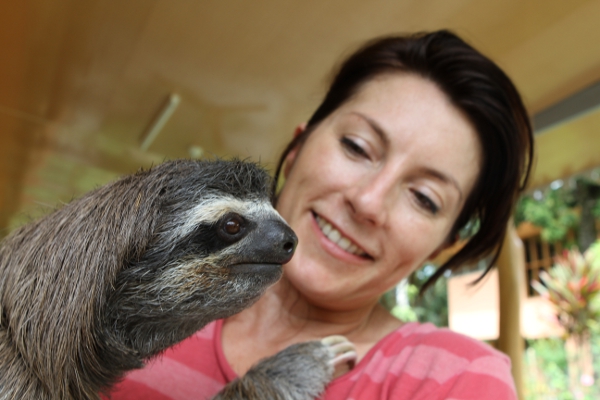
The Tao of Sloths
The Tao of Sloth
What would it be like to be a sloth? Human life would be a blur. Sloths seem to embody a central tenet of Taoism “action through non-action” so let’s consider a “Tao of Sloth”:
- Eat slowly – The sloth’s diet of leaves is hard to digest, their approach is to allow plenty of time
- Hang out – Sloths save energy by hanging from their claws rather than using their muscles
- Smile all the time – Sloths are cute and appear to smile though they’re not primates, they’re related to anteaters and armadillos
- Be kind and others will be kind to you – Three-toed sloths climb down from the safety of the tree canopy to poo on the ground, for the benefit of moths that live in their fur (the moths in turn encourage the growth of beneficial algae)
Post Credit: BBC News
The Truth About Sloths
Great article on BBC Earth by Henry Nicholls on the “truth about sloths”, including interviews with Rory Wilson and Becky Cliffe who have pioneered the Sloth Backpack Project.
Reputation: Sloths are lazy and stupid. They have to be because they look it. They are covered in algae. Yuck! They climb to the ground to perform a ritual defecation at the base of a tree, a risky business when there are eagle-eyed, fleet-footed predators around. They are bad at crossing roads. Silly sloths.
Reality: Slowness is the ultimate weapon in an evolutionary war against eagle-eyed, fleet-footed predators. What better way to blend in with the forest than to cosy up with algae and fungi. Ritual defecation is the sloth equivalent of speed dating, just without the speed.
Did You Know?
A sloth can turn its head almost 180 degrees, as it has an extremely flexible neck.
From the Nature Institute in New York:
The sloth’s neck is not only unique in its flexibility, but also in its anatomy. Mammals have seven neck (cervical) vertebrae. The three-toed sloth usually has nine and the two-toed sloth has between six and nine cervical vertebrae.
- ← Previous
- 1
- 2
- 3
- 4
- Next →
